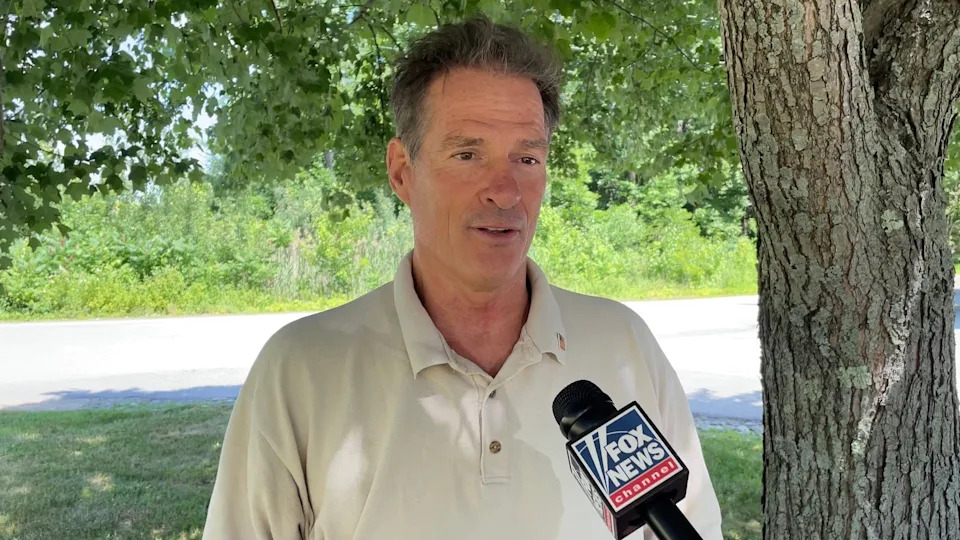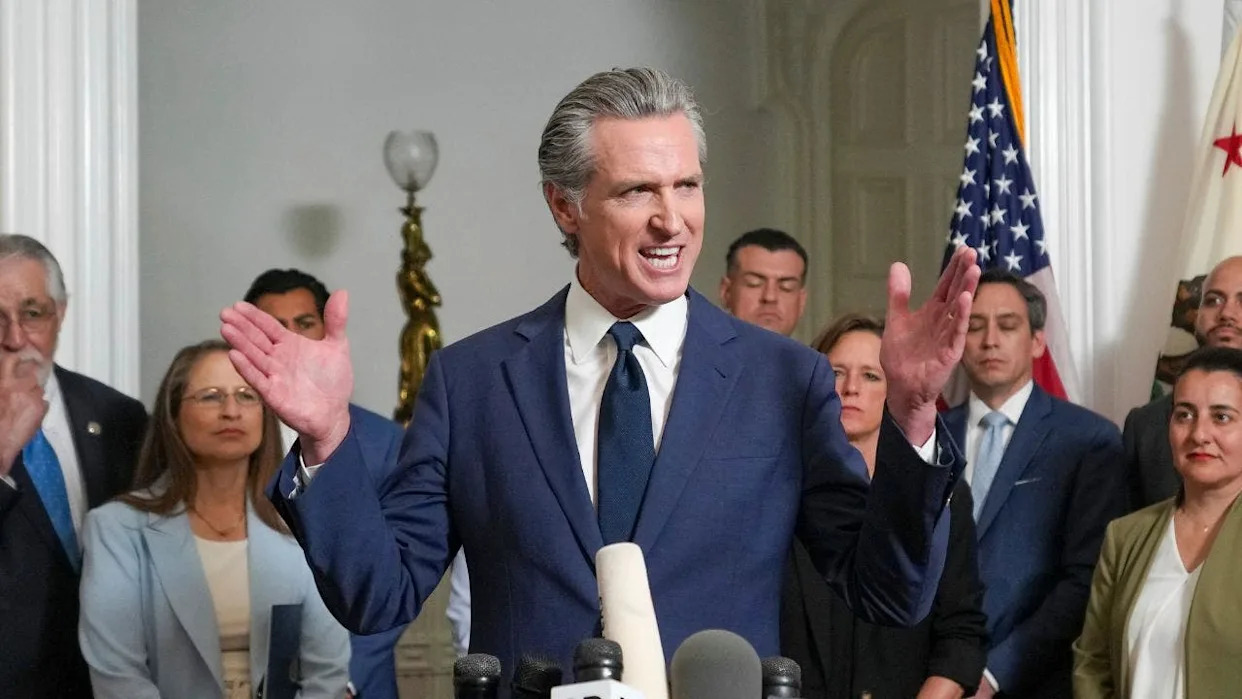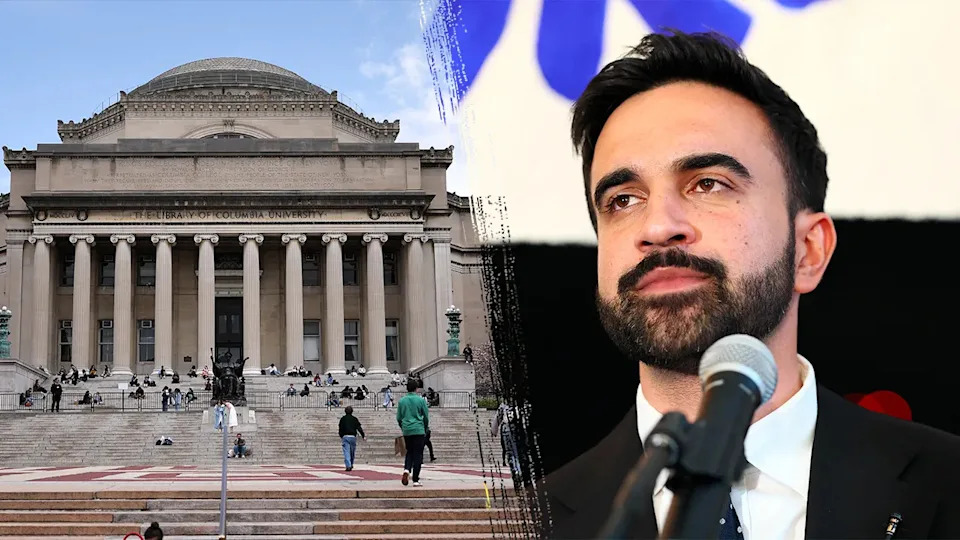
A redistricting arms race is heating up around the country as other states look to follow Texas’s lead in redrawing their congressional lines ahead of the 2026 midterms.
Multiple Democratic and Republican governors have expressed interest in their states conducting their own redistricting process to add as many seats as they can for their parties and increase the chances that their party can win control of the House next year. But whether they will be able to depends on the state and its own unique rules.
Here are the seven states most likely to follow Texas in redistricting:
Ohio
Ohio is the only state in the country, even including Texas, already guaranteed to redraw its district lines as it’s in a bit of a different situation than the others.
State lawmakers are required to approve a new map ahead of the midterms because the current map, in place since 2022, was only approved by a simple majority along party lines rather than a bipartisan supermajority. But with Republicans firmly in control of both houses of the state legislature, the party still seems likely to pick up a few seats with the next map.
The two Democratic lawmakers most likely to potentially lose their seats in the process are Reps. Marcy Kaptur and Emilia Sykes in the 9th and 13th Congressional districts. So while Republicans already occupy 10 of the 15 House seats that Ohio has, they could still pick up a few more.
California
California Gov. Gavin Newsom (D) has been arguably the most visible Democrat in responding to Republicans’ efforts to use redistricting, and the Golden State seems to be the party’s best chance to pick up the most seats if Texas approves a new map.
The process for California to redraw its lines in time for the 2026 midterms is a bit complicated — but possible. The state has an independent redistricting commission that determines its district lines, but Newsom confirmed on Friday the state would move forward with a special election in November that would allow them to create a new map in place for the rest of the decade.
The independent commission would remain intact for the reapportionment after the 2030 census, and a new map would only be used if Texas or another state redraws its lines first. But presuming Texas does redistrict, Newsom and state Democrats appear committed to advancing a plan that could gain their party up to five seats.
Florida
The Sunshine State is the other significant source of possible gains for the GOP through redistricting, and Gov. Ron DeSantis (R) has been increasingly hinting at the state GOP following Texas’s footsteps to add more Republican seats.
Florida state House Speaker Daniel Perez (R) announced on Thursday that he would form a redistricting committee to explore possible maps and legal questions associated with how the lines are drawn. But he didn’t specify the timeline for redistricting, saying the committee’s members would be announced next month.
But a few Democrats could be targeted if the process advances, including Reps. Debbie Wasserman Schultz, Jared Moskowitz and Darren Soto. And Republicans are feeling particularly emboldened after the state Supreme Court upheld the current map against claims of racial gerrymandering.
Indiana
Along with the big-ticket states that could give the GOP multiple extra seats, the Trump administration is also putting pressure on smaller states that could net only one seat.
Vice President Vance visited Indianapolis on Thursday for a meeting with Indiana Gov. Mike Braun (R) to discuss mid-decade redistricting. Braun didn’t commit to redistricting following the meeting, but he left the door open.
Meanwhile, Trump’s allies were reportedly exploring options in Indiana late last month. Braun would need to call a special session of the legislature and Republicans would have to move quickly, but the party has a supermajority.
If approved, a new map would most likely target Rep. Frank Mrvan (D-Ind.) in the northwestern part of the state.
Missouri
Missouri is another state where Republicans theoretically could pick off another Democratic-held seat if the party members want to push forward.
The administration has also put pressure on the GOP in the state, with Rep. Emanuel Cleaver (D-Mo.) as the likely target, but the reaction from state lawmakers has been mixed. State House Speaker Pro Tempore Chad Perkins initially expressed doubt about redistricting early, but he showed more openness to it after receiving a call from the White House.
But state Senate President Pro Tempore Cindy O’Laughlin told The Missouri Independent that she also wasn’t too eager about the plan, and Perkins expressed concern about possible backlash to Gov. Mike Kehoe (R) calling a special session.
New York
New York Democrats seem just as determined as their California counterparts to update their district lines, but their chances of being able to update them before next year’s elections seem slim.
The Empire State also uses an independent commission to draw its lines, with approval from the state legislature. State lawmakers can propose a constitutional amendment to voters to change the system, but any amendment needs to pass in two consecutive sessions of the legislature before being proposed to voters.
This would mean that no change could go into effect until ahead of the 2028 elections at the earliest. But Gov. Kathy Hochul (D) has pledged to look at all available options, acknowledging the time constraints and wanting a faster timeline.
She said the independent commission should be disbanded or changed, and she would also look at litigation options.
New Jersey
The Garden State would be an ideal spot for Democrats to try to pick up a seat or two, but barriers put in place will likely make this not possible before the midterms.
New Jersey also has an independent commission that lawmakers would need to go around to enact a new map, but its state constitution also specifically prohibits mid-decade redistricting.
Both of these could be overcome with a constitutional amendment, and Democrats have comfortable control of both houses of the state legislature, but likely not enough time remains to change it in advance.
The public needs a three-month notice period before voting on an amendment, which means this past Monday was the deadline for getting it passed ahead of Election Day on Nov. 4.
Copyright 2025 Nexstar Media, Inc. All rights reserved. This material may not be published, broadcast, rewritten, or redistributed.
For the latest news, weather, sports, and streaming video, head to The Hill.








Comments